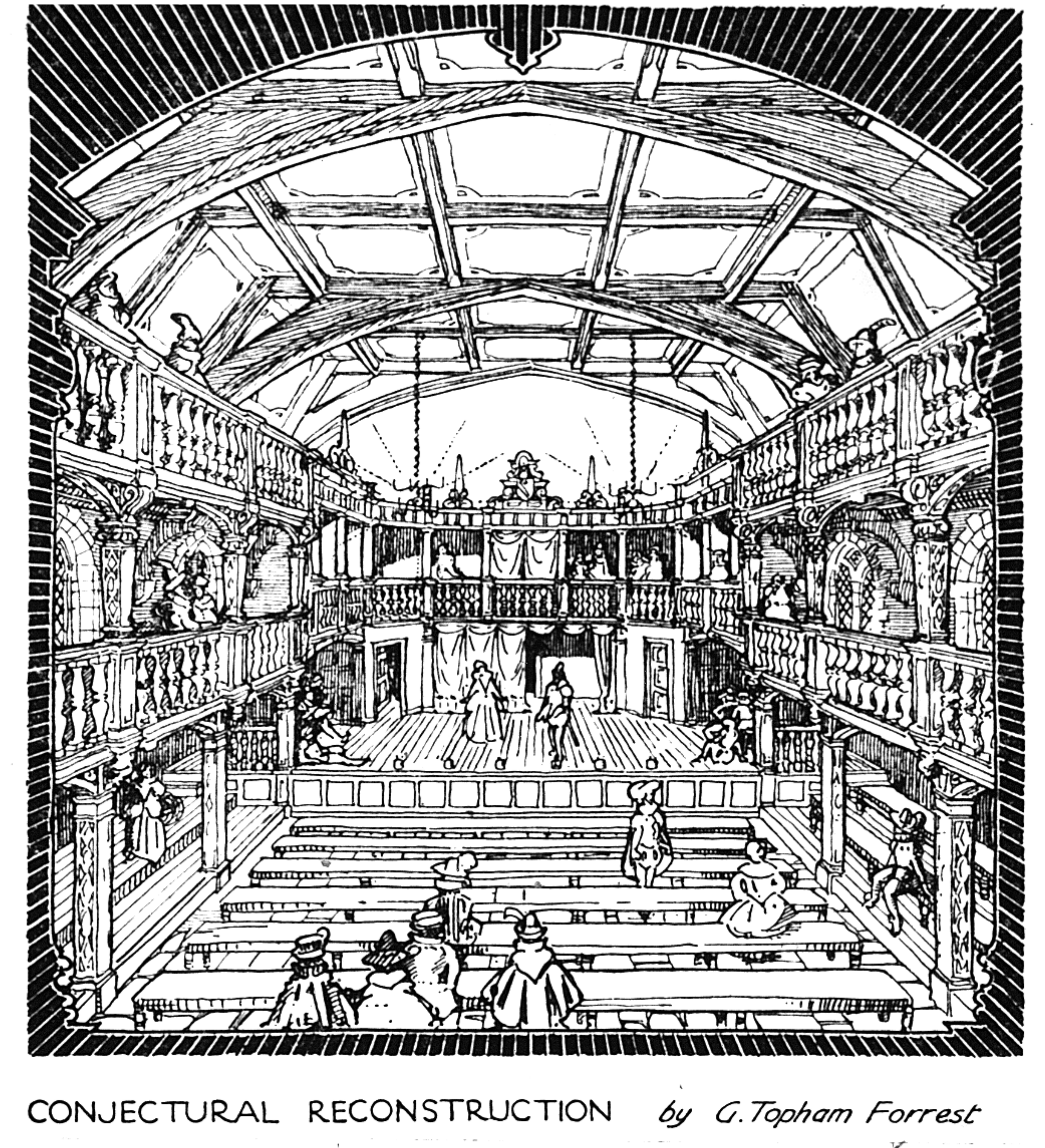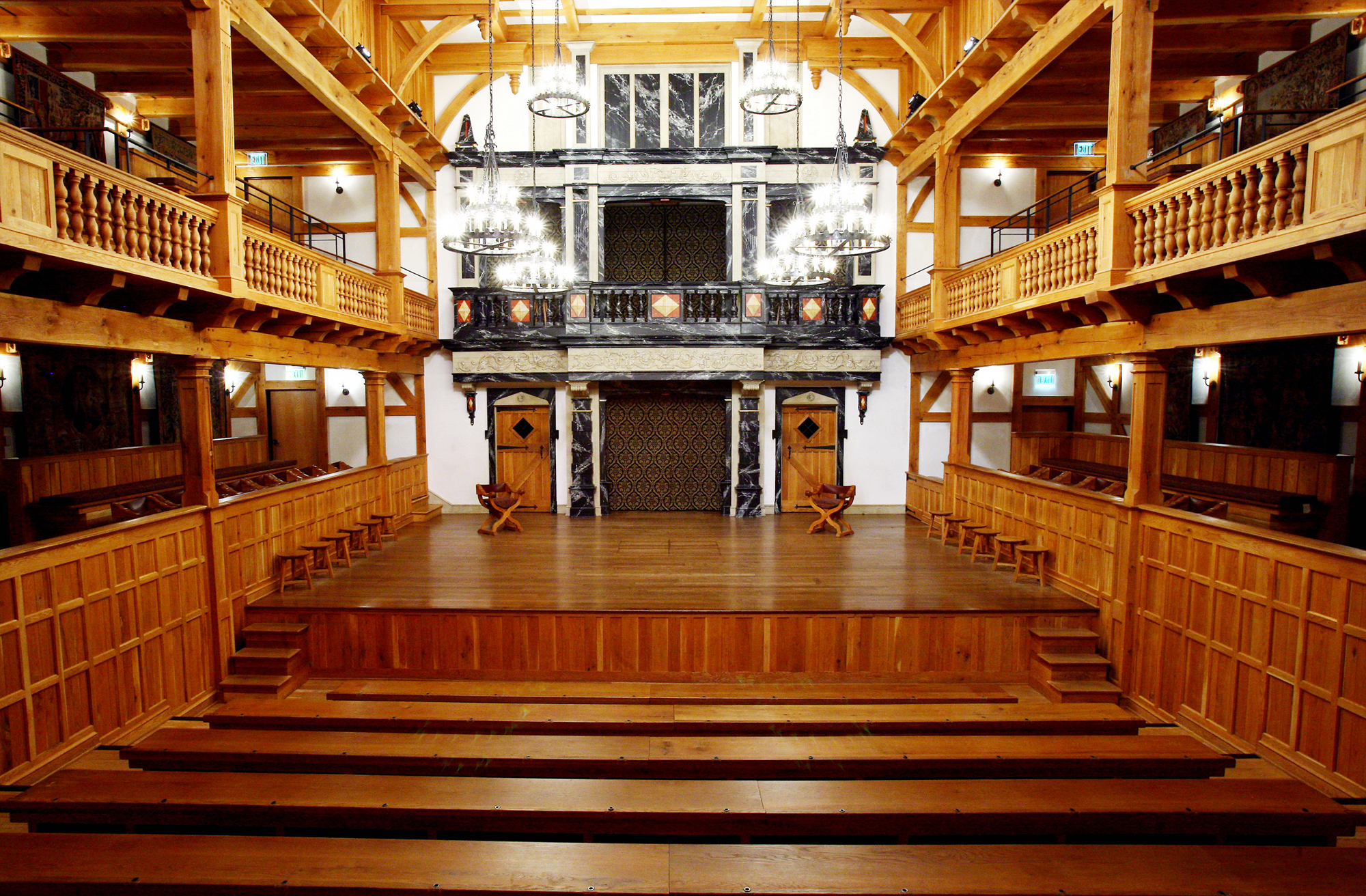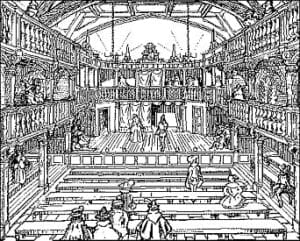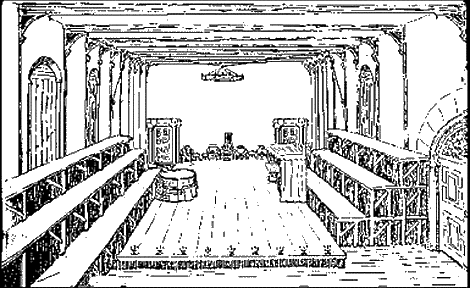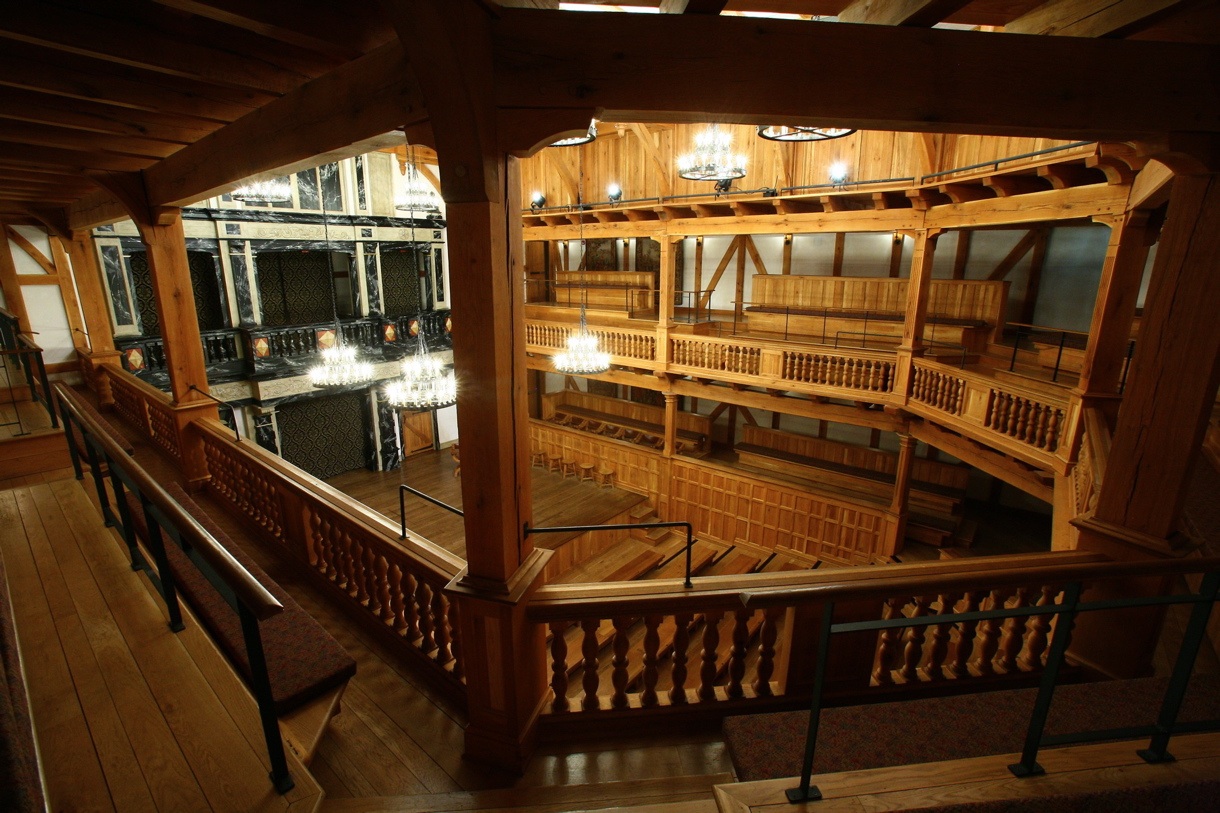Blackfriars Theatre
Blackfriars Theatre was the name of two theaters that existed in the City of London in the late 16th and first half of the 17th century in succession.
History
From 1576 hired Richard Farrant (* about 1530, † 1580) parts of an abandoned Dominican monastery for the Children Of The Chapel Royal, a project managed by his royal Boys Theatre. There the child's actors could rehearse before they performed their pieces at court. ( † 1597 * ca 1531) another part of the monastery and built it into a hall-like stage in 1596 acquired the enterprising theatrical manager James Burbage. Because angry protests of the neighbors he had to make his playhouse, however, after some time lease back to children stages. He inherited the venue in 1597 his son Richard Burbage, the successful actor of the Lord Chamberlain's Men was. William Shakespeare wrote for this Company, which was now called 1603 The King's Men, numerous plays.
To the great displeasure of some noble roommate the second Blackfriars Theatre developed ( even the older children's theater to bear the name ) from 1608 to the much-visited winter residence of Shakespeare Schauspielkompagnie. In contrast to the open Globe Theatre could be played in an enclosed, intimate room, which offered new possibilities. For the first time music and lighting effects are integrated into the theater. At the outbreak of the English Civil War in 1642, the Blackfriars Theatre was forcibly closed, fell into ruin and was eventually terminated on August 6, 1655.

